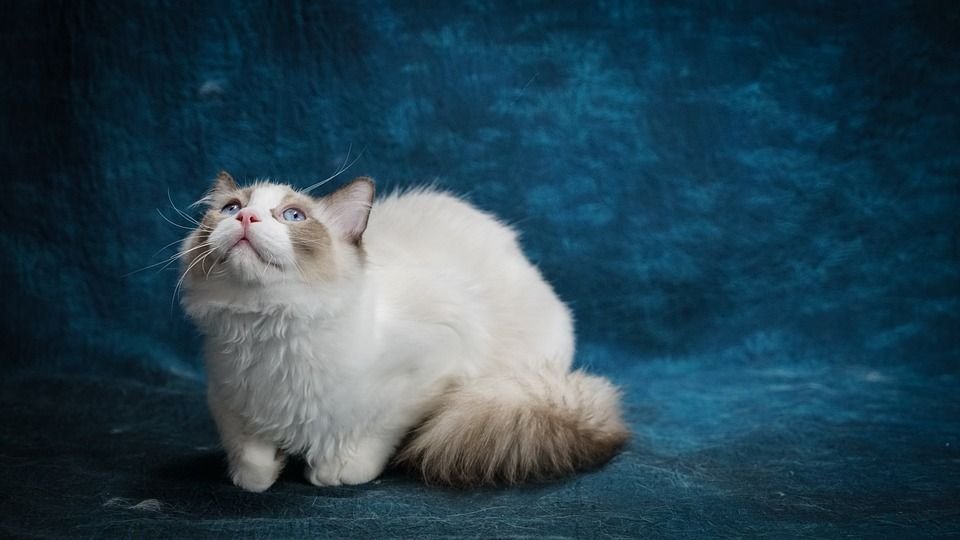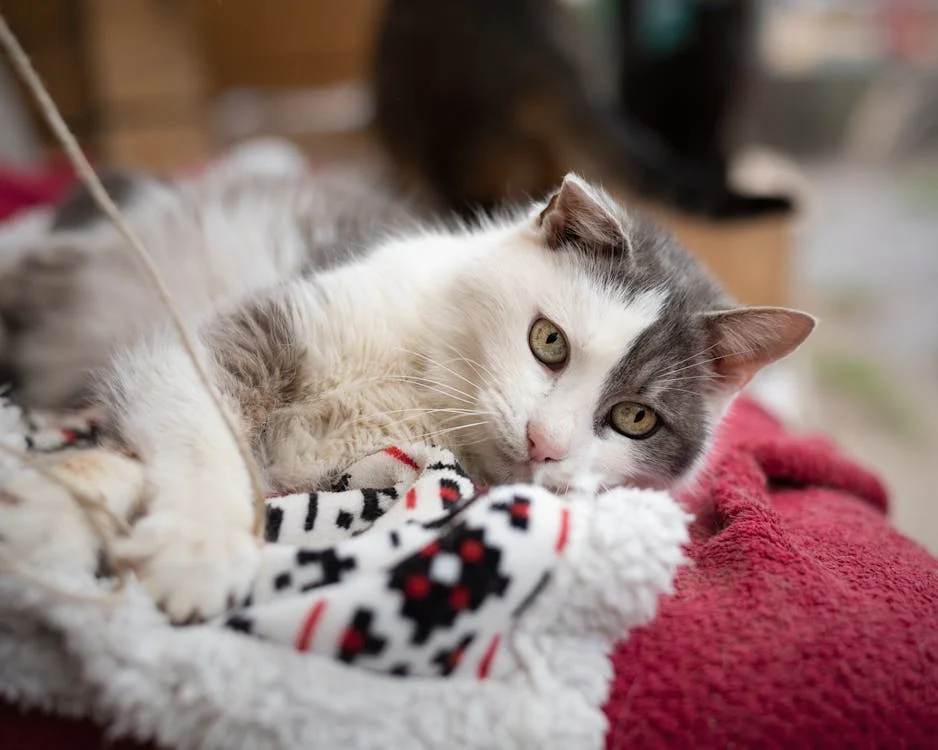Ragdoll cats are known for their affectionate and laid-back nature, making them a popular choice among pet owners. These cats are large, with striking blue eyes and semi-long fur, and are often referred to as “puppy-like” due to their tendency to follow their owners around the house.
This breed’s loving personality is both a blessing and a challenge for potential owners. On one hand, Ragdolls make wonderful companions who are eager to shower their owners with affection. On the other hand, their need for human interaction can make it difficult to leave them alone for extended periods.
In this comprehensive article, we’ll explore the question “Can Ragdoll Cats Be Left Alone?” and provide insights into the unique needs and considerations of this breed.
Can Ragdoll Cats Be Left Alone?
Yes, Ragdoll cats can generally be left alone for short periods without any issues. These cats are known for their calm and easygoing nature, which makes them more adaptable to being alone compared to some other breeds.
If you have a Ragdoll cat and need to be away from home long period of a working day, it’s essential to ensure that your cat has access to food, water, and a clean litter box. You may also want to consider leaving toys or interactive feeders to keep your cat entertained and stimulated while you’re away.
How Long Can Ragdoll Cats Be Left Alone?
Ragdoll cats are typically more active at night or in the early morning, allowing you to leave them undisturbed for 8 to 12 hours. Leaving them alone for more than 12 hours can lead to boredom, loneliness, and potentially destructive behaviors.
If you must be away from home for extended periods, it’s best to arrange for a pet sitter or have a friend or family member check in on your Ragdoll regularly. This will help ensure your cat’s needs are met and prevent any potential problems.
I personally recommend that you do not leave a Ragdoll cat alone for 24 hours or longer. Doing so can lead to significant behavioral and emotional problems for the cat.

Sign Of Separation Anxiety In Ragdoll Cat
Separation anxiety occurs in Ragdoll cats when they are away from their owners for extended periods, whether it’s a day, a week, or longer.
Understanding these signs can help you support your cat’s well-being.
- Avoiding You
- Hiding Away
- Over-grooming
- Not Eating
1. Avoiding You
Ragdoll cats form strong bonds and crave human companionship constantly. However, when experiencing separation anxiety, they may start to avoid their owners altogether. This can manifest in the cat refusing to come when called or hiding from their owner.
Over time, the Ragdoll may even become resentful. They will completely ignore their owner’s attempts to interact. The cat’s avoidance behavior shows it feels stressed and anxious. Being separated is the issue.
2. Excessive grooming
Excessive grooming or compulsive cleaning can be a sign of stress and anxiety in Ragdoll cats. When left alone, a cat with separation anxiety may start to overgroom certain areas of their body, potentially leading to bald patches or skin irritation.
In severe cases, overgrooming can even lead to hairball issues or skin problems that require veterinary attention.
3. Being Aggressive
When experiencing separation anxiety, a Ragdoll may exhibit uncharacteristic aggressive behaviors.
This can include excessive meowing, destructive actions like shredding furniture or curtains, and even becoming physically aggressive towards their owner when they try to leave.
The cat may be trying to assert dominance or prevent their owner from departing, as they are distressed by the prospect of being left alone.
4. Not Eating
Separation anxiety can have a significant impact on a Ragdoll cat’s appetite and eating habits. Cats with this condition may refuse to eat or drastically reduce their food intake when left alone. This is because the stress and distress of being separated from their owner can cause a complete disinterest in food.
A Ragdoll that stops eating for more than 24 hours is a serious concern, as it can lead to health issues like hepatic lipidosis.

What is the most effective approach to managing separation anxiety in Ragdoll cats?
Here are the best ways to deal with separation anxiety in Ragdoll cats:
Training Your Ragdoll
Increase the time your Ragdoll spends alone gradually. Start by leaving them for short periods (20 minutes, 1 hour, 3 hours, etc.) and slowly build up to longer absences. This process, called desensitization and counterconditioning, helps them learn that being alone is not scary and something good (treats) happens when you return.
Providing a Companion
Cats are very social and hate being alone. Some Ragdolls do well with another cat or even a dog companion to keep them company while you’re away. However, introducing a new pet should be done slowly and carefully.
If your Ragdoll doesn’t take to another pet, a companion may not be the best solution.
Using Calming Scents and Toys
Leaving an unwashed item, like a t-shirt or pillowcase, for your Ragdoll to snuggle can comfort them. It has your scent. Provide a warm, cuddly object like a heated rice sock wrapped in fleece or a plush toy.
Offer puzzle toys stuffed with treats or catnip to keep them mentally stimulated and occupied. Pheromone diffusers or sprays like Feliway can also have a calming effect. Rotate toys to keep things interesting.
Making the Environment Comfortable
Set up a cozy, comfortable space for your Ragdoll with a perch or cat tree near a window, their food and water, a litter box, toys, and a soft bed.
Leave the TV or radio on to provide comforting background noise and distraction. Make sure they have a view of the outdoors from a window.
Provide vertical space to climb and horizontal space to rest. Ensure they have everything they need to feel safe and secure.
Hiring a Pet Sitter or Asking Friends to Visit
Having a trusted friend, family member, or pet sitter stop by can help. They can play with, feed, and spend time with your Ragdoll. This can greatly ease anxiety.
Arrange for someone to visit for 20-50 minutes a few times a day while you’re gone. Provide them with your cat’s routine, favorite toys, and treats.
A pet sitter can also stay overnight if you’ll be away for more than a day. Be sure to introduce your Ragdoll to the sitter ahead of time so they are comfortable.

Conclusion
Ragdoll cats are affectionate, sociable creatures that form deep bonds with their owners. While they can be left alone for short periods, it’s essential to ensure they have everything they need to stay happy and healthy in your absence. By following the tips outlined in this guide, you can strike a balance between providing your Ragdoll with the companionship they crave and fostering their independence.
Ragdoll cats can indeed be left alone, provided their physical and emotional needs are met. Whether you have one Ragdoll or are considering adding another to your family, understanding, and catering to their unique needs will ensure a harmonious and loving relationship with your furry friend.
FAQs
Can ragdoll kittens be left alone?
Yes, Ragdoll kittens are left to be alone but not for extended periods, as they require frequent interaction, supervision, and care. Kittens under 18 months old are especially sensitive to separation and may develop anxiety if left alone for more than 4-6 hours at a time.
Can Ragdoll cats be left alone at night?
Ragdoll cats can generally be left alone at night, but it’s not recommended to leave them alone for extended periods. While adult Ragdolls may handle being left alone overnight, it’s best to limit this to no more than 8-12 hours.
Can ragdoll cats be left alone for a week?
No, Ragdoll cats should not be left alone for a week. Ragdolls are highly social and require frequent interaction and companionship.

Hey guys, My name is Simon Smith. I’m from Canada and live near Victoria
I live with my sweet family and have 20+ Ragdolls of different types. I love them as my children. My profession is as a hotel manager.
I love to keep Ragdolls and grow their breeder case. I have 7 years of experience.
I’m an expert in cat care. So, I’m here to provide you with new information about my cats daily. This is my blog website, so I request that you kindly visit our site daily.
If you’re a Ragdolls lover and you have any questions or confusion about cats, text me on the Contact Us page or Gmail.
Thank u
